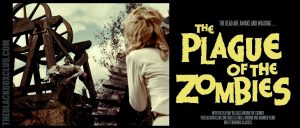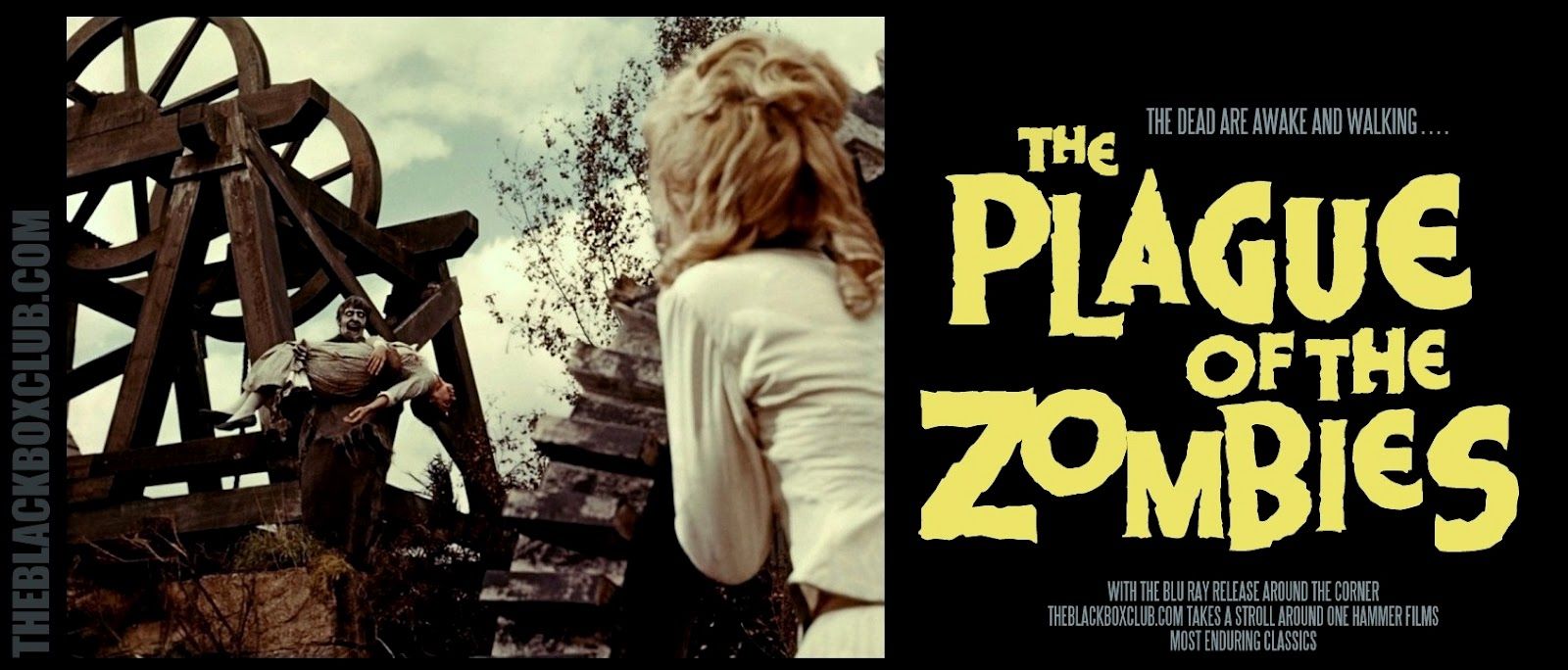
Sir James Forbes (André Morell) and his daughter, Sylvia (Diane Clare), are out of the blue requested to travel to a Cornish village by Sir James’ former pupil, Dr. Peter Thompson (Brook Williams). The village has become a haven for mysterious deaths and Peter’s believes that Sir James can shed some light on the matter. No sooner do they arrive when another victim surfaces and it’s quickly becomes evident that something far more sinister than medical problems is at work here.
Hammer Horror tackles the zombie sub-genre with no little amount of success. Directed by John Gilling, The Plague Of The Zombies was filmed back to back with the equally entertaining The Reptile. Filmed out of fortress Hammer that was Bray Studios, the same sets that were used for The Reptile were also used here. With Bernard Robinson’s Cornish Village again a treat for sore eyes. 1966 was the last year that Hammer used Bray Studios and it’s fitting that it was a year that saw efficient and varying creepers filling out the Hammer Horror cannon. Peter Bryan’s story, aided by some interesting imagery, delves into the dark world of witchcraft and voodoo, thus giving this particular “zombie” piece an extra dimension. This is not merely about zombies roaming the countryside and killing indiscriminately. Evil they are of course, but they have a purpose and being that comes to light as the story unfolds. There’s also nods to tyranny and exploitation, wryly observed by the makers here, cheekily cloaked in a cloud of rotting flesh.
Technically it holds up rather well too. The effects are strong enough to carry the story, with the zombies eerie personified as they shuffle around all green flesh and grumbling away as we know they should. All captured in deluxe colour that comes out nice in High Definition. The cast are fine, with Morell standing out as he gives his usual classy and professional performance, while James Bernard’s score is suitably at one with each and every change of pace. This is not just a fine and under appreciated part of the Hammer Horror output, it’s also a worthy and most notable entry in the “zombie” genre.

